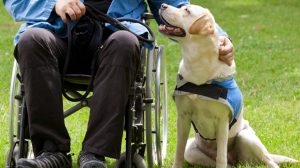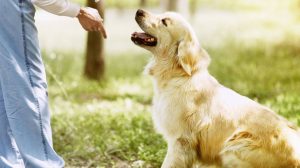If you own multiple pets simultaneously, you know that canine rivalry is normal behavior. Dogs are pack animals, and there is usually a clear hierarchy in a pack. As a dog owner, you should accept the hierarchy established by the animals in the box – however, many pitfalls lurk here for us humans.

The dog owner is, at best, the “leader of the pack.” Your fur noses are in the hierarchy below but, in turn, have leaders and subordinate animals among themselves. There is no democracy in the pack – the one with the higher rank dictates how it goes. You must recognize and acknowledge or respect this hierarchy among your dogs and behave correctly in certain situations.
Rivalry among dogs arises when the hierarchy is unclear.
Rivalry among dogs, for example, in arguments over dog toys, petting, or dog food, occurs when the hierarchy in the pack is unclear. Usually, dogs establish their order among themselves – for example, there will be a dominant dog and a subordinate dog in a two-dog household. The animals must determine their positions themselves. When we humans interfere in the hierarchy of our dogs, rivalry and conflict are bound to ensue.
Dog owners must accept hierarchy among dogs.
How intense rivalry is expressed between dogs depends mainly on us humans because, Unfortunately, we unconsciously tamper with the natural hierarchy of our sofa wolves and thus cause conflicts. An example should illustrate how quickly you as a dog owner can cause unrest in the pack:
Let’s take the two fictional dogs, Bello and Hasso. The two Golden Retrievers live together in a multi-dog household and have divided up the hierarchy so that Bello is the dominant dog and Hasso is the “inferior” dog. If Bello now reprimands Hasso, for example, because he claimed the two’s favorite toys for himself, Hasso will pull himself out of the affair with appeasement signals and submit himself. This is normal behavior and necessary for pack harmony.
For us dog owners, however, the situation seems wrongly unfair because, from our point of view, Bello is “mean” to Hasso at first glance since he takes the toy away and also growls or barks. But this is not the case. Dog owners often act as mediators in such situations and comfort the “weaker” dog; in this case, Hasso, with the words: “Oh Hasso, was Bello mean to you again? Here you have a new toy.” In the worst case, Bello is also reprimanded by the dog owner for having disputed the toy with Hasso.
However, this behavior is very confusing for the two dogs because the dog owner interferes with the established hierarchy. They think that the supreme pack leader (dog owner) wants to make Hasso the superior among the four-legged friends. The result: Bello and Hasso are pushed back into the role of rivals, and from now on, they have to fight out their rivalry again to clarify the hierarchy.
Ranking among dogs: who is the leader?
Dog owners should recognize and respect the hierarchy among dogs to promote harmony in the pack. As the owner, you cannot decide who is the leader among your dogs. You must see who the dominant dog is. But how do you recognize which of your woofs is the “stronger”?
You can identify this based on specific behaviors: The leader usually goes ahead – for example, when you go out the door for a walk. If both stand in front of each other, the “weaker” dog usually ducks away slightly or looks to the side. The dominant dog will usually start eating sooner. If you pay attention to such details, you will quickly find out how the hierarchy is set in your home.
Accept and acknowledge the established hierarchy
If you want to avoid rivalry, you can use your actions to show that you accept the hierarchy among your dogs. Small gestures are usually enough. For example, if you heed the following tips:
● Always greet the leader of your dogs first and then the other.
● Don’t punish the dominant dog if he occasionally puts the subordinate dog in his place, but stay out of it (unless bullying occurs or the dog fight gets out of hand).
● Do not comfort the subordinate dog if it has been reprimanded in the order of precedence.
● Leash the leader dog first when going outside.
● Unleash the leader dog first if you want to let your dogs off-leash anywhere during the walk.
Only exceptionally rarely are there real “tyrants” among dogs. Usually, no dog will poke another without reason or behave unfairly. Dogs also do not feel jealousy in the human sense and are generally comfortable once they have found their position in the pack. There is only harmony when the hierarchy is clearly defined. As a dog owner, resist the impulse to intervene in the order.










